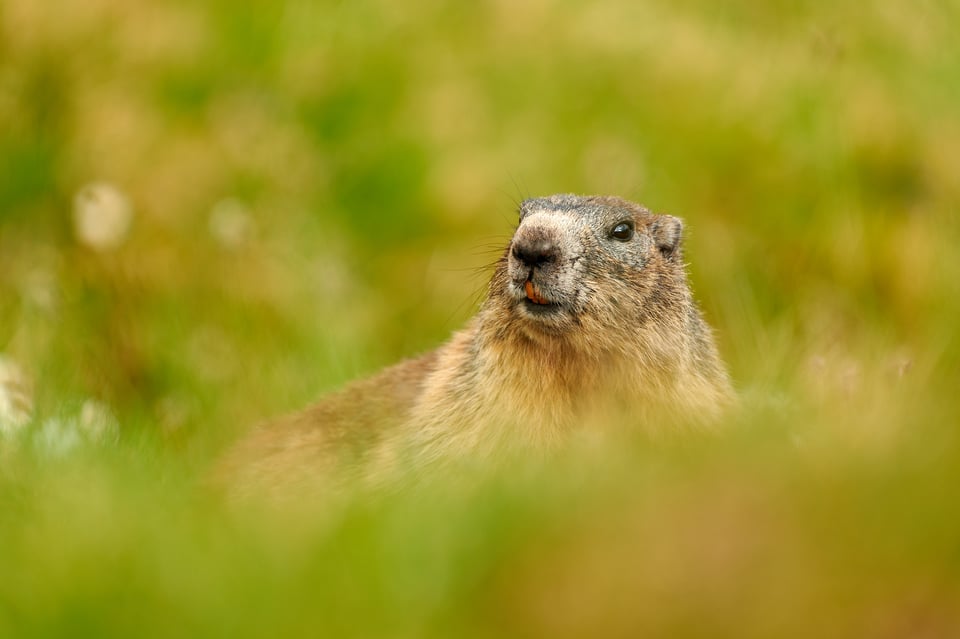Alpine Marmots, often considered the epitome of cuteness, present a stark contrast between their charming appearance and the challenging reality of their mountainous existence. Venturing into the Austrian Alps, 2500 meters above sea level in the shadow of the Grossglockner, I immersed myself in the world of these fascinating creatures for a week, camera in hand.

Contrary to the initial allure of fluffy coats and amiable faces, the life of a marmot mirrors the toughness inherent in any mountain-dwelling creature. Enduring harsh climatic conditions, with snow-covered landscapes for half the year, these high-altitude abodes are far from a leisurely haven. Yet, it’s not just the external elements that make their existence demanding; the very nature of marmots adds a layer of complexity.

Living in family units comprising five to fifteen members, the dynamics within these groups defy the idyllic image of harmonious coexistence. Dominated by an alpha pair, these leaders secure the exclusive right to reproduce through relentless bullying of subordinate family members. The stress hormones in offspring from prior broods inhibit their reproduction, casting a shadow on the supposedly familial bonds.

Their responsibilities extend beyond mere survival; during hibernation, the marmots become a vital source of warmth, ensuring the entire family weathers the cold together. Huddled in underground burrows as frosty winds rage outside, their heart rates drop significantly, and breaths become scarce. Those lacking sufficient fat reserves face a grim fate, especially the youngest generation.

Should a spirited young marmot aspire to independence and starting a family, it must depart the colony to seek its fortune. However, this journey is fraught with challenges and often involves fierce resistance, sometimes escalating into brutal conflicts, reminiscent of Shakespearean dramas unfolding on the Alpine slopes.


Even in the event of a change in the dominant pair, peace remains elusive within the colony. The new male may resort to infanticide, a phenomenon witnessed in other mammals like lions, though with different motives. In marmots, killing cubs doesn’t pave the way for another litter in the same year. Instead, it aids in conserving energy, ensuring the female enters the next spring in prime condition, ready to bear healthier offspring.
Infanticide is a rare spectacle among marmots, making my firsthand observation a somber privilege. Skirmishes, both minor and severe, are commonplace, with even juveniles engaging in pretend scuffles that can turn deadly. The life of a marmot has never been easy, and recent changes in climate exacerbate their challenges, making survival more precarious.


Warming temperatures bring paradoxical difficulties, with insufficient snow cover leaving marmot burrows vulnerable to the cold. The once-effective insulation during hibernation becomes compromised, jeopardizing the survival of the young. The traditional marmot family structure, with its virtues and vices, starts to erode as the survival rate of large colonies approaches that of independent pairs.


Similar to people seeking refuge from a flood, marmots ascend higher up the mountainsides to shelter under deeper snow. However, there’s no proverbial Noah’s Ark awaiting them at the summit. As their habitat diminishes, so does the marmot population, with estimates indicating a 4% annual decline. What was once a thriving species now faces the prospect of inclusion in the Red Data Book.

In the tapestry of Europe’s mountains, these remarkable rodents are integral, defining the character of high alpine meadows with their distinctive postures, playful skirmishes, and vigilant whistles to warn of predators. My earnest hope is that by unveiling the fascinating and formidable aspects of their lives, you’ll develop a profound respect for these creatures, prompting you to seek them out with admiration the next time your lens captures the majesty of the mountains.






















